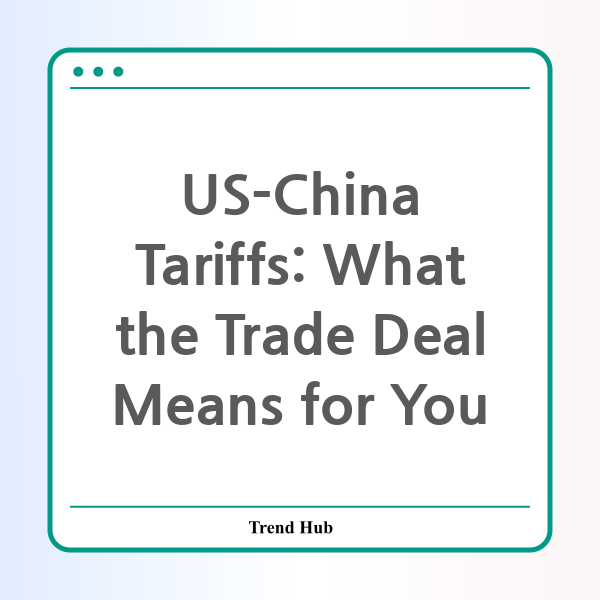* This website participates in the Amazon Affiliate Program and earns from qualifying purchases.

Is the US-China trade war finally coming to a close? Recent developments suggest this might be the case. The stock market saw a remarkable surge after both nations agreed to lower tariffs significantly, raising hopes for a more stable economic future. This blog post dives into the implications of this trade deal and what it means for businesses, consumers, and the economy overall.
On a recent Monday, US stocks experienced a significant boost, with the Dow Jones Industrial Average soaring over 1,100 points. Investors reacted positively to news that President Trump’s trade team had brokered a dramatic de-escalation in ongoing trade tensions with China. The decision to lower tariffs was not only unexpected but has been hailed by many economists as a potential lifesaver for the US economy, which had been teetering on the brink of recession.
Prior to this agreement, the situation was grim. The trade war initiated by the Trump administration had led to a series of tariffs that climbed to staggering levels, with some as high as 145% on Chinese imports. This provoked China to retaliate with its own tariffs on US goods, creating a tit-for-tat situation that placed immense pressure on both economies. With businesses struggling to cope with increased costs and uncertainty looming, the reduction in tariffs has been welcomed as a much-needed relief.
According to economists and market analysts, the stock market's rebound reflects a shift in investor sentiment towards optimism and risk-taking. The easing of trade tensions has not only boosted the stock market but also reduced fears of a looming recession. Companies that rely heavily on imports and exports, particularly in the technology and automotive sectors, have seen a considerable uptick in their stock prices. For example, tech giants like Apple and Amazon reported significant gains following the announcement.
The mechanism established to prevent future tariff increases suggests that both nations are eager to maintain stability in their trade relationship. Treasury Secretary Scott Bessent's comments indicate that the US negotiated from a position of strength, as the Chinese economy is currently facing challenges such as a housing crisis and decreased consumer spending. This could provide the US with a leverage point as negotiations continue, especially if the focus shifts towards reducing the dependency on Chinese imports for critical commodities like semiconductor chips and medical supplies.
This trade deal also represents a pivotal moment for American consumers. With tariffs lowered, prices of goods are expected to stabilize, easing the inflationary pressures that have weighed heavily on household budgets. The retail sector, in particular, could benefit from a more favorable trade environment, potentially leading to lower prices for consumers shopping for electronics, vehicles, and more.
Yet, it’s essential to remain cautious. The trade agreement may be a temporary pause rather than a permanent resolution, and the possibility of returning to higher tariffs still looms if negotiations falter. Market analysts suggest that while investors are embracing a more aggressive stance, they should remain vigilant for signs that this newfound optimism can translate into a lasting agreement.
In conclusion, the significant reduction in US-China tariffs marks a turning point in the ongoing trade saga that has dominated headlines for years. While this development has sparked a rally on Wall Street and provided much-needed reassurance to American businesses and consumers, the journey toward a more stable trade relationship between the two largest economies in the world is far from over. The key for stakeholders will be to stay informed and prepared for any potential shifts in the trade landscape.
* This website participates in the Amazon Affiliate Program and earns from qualifying purchases.